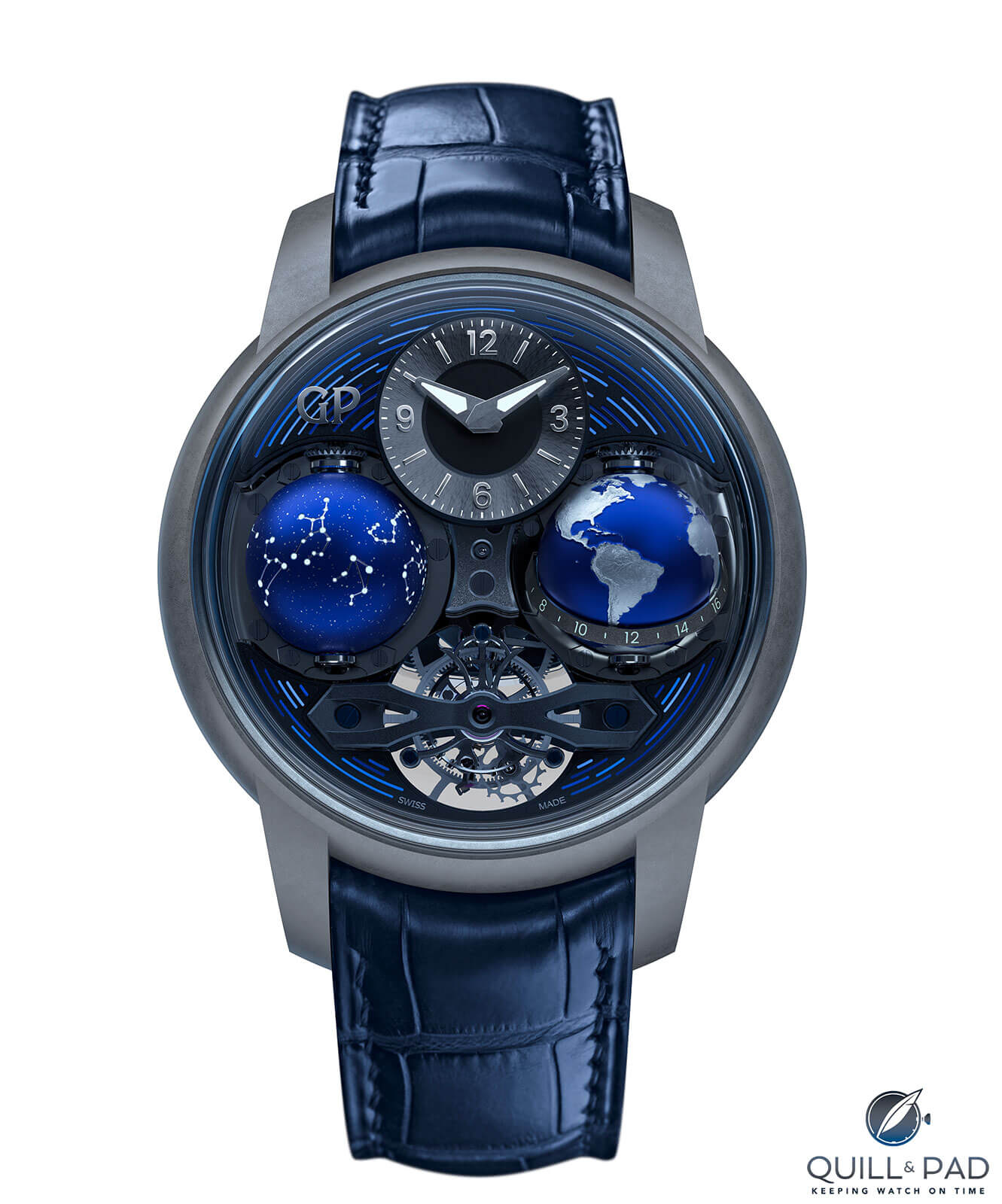“The cosmos is all that is or ever was or ever will be. Our contemplations of the cosmos stir us. There is a tingling in the spine, a catch in the voice, a faint sensation, as if a distant memory of falling from a great height. We know we are approaching the grandest of mysteries.
“The size and age of the cosmos are beyond ordinary human understanding. Lost somewhere between immensity and eternity is our tiny planetary home, the earth. For the first time, we have the power to decide the fate of our planet and ourselves. This is a time of great danger.
“But our species is young and curious and brave. It shows much promise. In the last few millennia, we’ve made the most astonishing and unexpected discoveries about the cosmos and our place within it. I believe our future depends powerfully on how well we understand this cosmos in which we float like a mote of dust in the morning sky.”
On September 28, 1980 humanity’s understanding of the cosmos was forever changed thanks to Carl Sagan, Ann Druyan, and Steven Soter when the 13-part mini-series Cosmos: A Personal Voyage debuted on PBS.
Delivered by Sagan, the poetic words above opened the first episode and set the stage for one of the grandest explorations of the cosmos that anyone had ever attempted, turning Sagan into an entire generation’s leading science communicator.
Thirty-four years later the leading modern science communicator, Neil deGrasse Tyson, opened the 13-part sequel series Cosmos: A Spacetime Odyssey using Sagan’s original first line, proving that no better words could convey the magnitude of the adventure he was about to share.
And that is the reality of the cosmos; it is simultaneously the biggest expanse of the wide universe and the intensely personal experience of our own selves, forever inextricably linked. We are in the cosmos and we are the cosmos.
Not only do we see the cosmos by looking up, but we see it by looking down and looking inward and to each other. This truth is powerful once you grasp it, and it can shape how you move through life.

Girard-Perregaux Bridges Cosmos on the wrist
The Cosmos series has touched countless people, and it seems one such person at Swiss watchmaker Girard-Perregaux took the lessons to heart. The Bridges Cosmos, a major release from the brand at SIHH 2019, is a magnificent astronomical watch featuring two views of the cosmos, standing as a mechanical love letter to the concepts Sagan described all those years ago.
Girard-Perregaux Bridges Cosmos: creating an experience
As the name implies, the Girard-Perregaux Bridges Cosmos is part of Bridges collection, which is the philosophical backbone of the brand. The Cosmos does not however follow many of the conventions normally found within the line, instead seeking to create an experience over the machine itself.
It all centers on two spherical astronomical displays that invoke the “Earth to Sky” theme that has been the focus of Girard-Perregaux for 2019.

Girard-Perregaux Bridges Cosmos dial side
The idea is to get people to understand and try to shift their perspectives. The Cosmos’ first sphere focuses on the stars, where a two-piece titanium example depicts the night sky, highlighting certain constellations to act as a sky chart. These constellations are customizable by the owners, depending on the sky they want depicted. As one might expect, the constellations are luminescent and glow brightly once the sun goes down.
With the perspective on the sky taken care of, the sphere on the right flips that vantage point and puts people in the stars, providing a view of the earth from a great distance. The sphere features all the continents with embossed luminescent shapes, and thanks to a 12-hour ribbon arcing over the sphere it acts as a world time indication, at least for the half experiencing daytime.

Girard-Perregaux Bridges Cosmos
While globes have been put into wristwatches before, the contrast of an opposite celestial perspective directly adjacent to the terrestrial globe reminds the viewer that we are but a small part of something much grander than ourselves.
The areas around the spheres, tourbillon, and offset dial have time-lapse star paths engraved into the surfaces to depict the night sky, showing how we move relative to the cosmos. These lines are also luminescent, creating a scene that helps the Cosmos come alive at night.

Girard-Perregaux Bridges Cosmos titanium tourbillon
The titanium tourbillon at 6 o’clock beats at a relatively leisurely 21,600 vph (3 Hz) so no speedy rotation to throw off the visualization. The tourbillon is supported with a black PVD-coated titanium neo-style bridge that maintains the link to the Bridge collection without dominating too much.
In any other watch the tourbillon would be the highlight, but it actually feels a bit subdued next to the two shining titanium globes.
Detail is key
Girard-Perregaux emphasized the globes even further by removing the crown or any adjusters from the case band and putting them on the back. The presentation stays symmetrical this way as well as having the added benefit of keeping the already thick movement from getting more complex with the keyless works that would either have had to snake around the globes or require a crown at 12 o’clock.

Girard-Perregaux Bridges Cosmos
One interacts with the Cosmos via four individual flip-out tabs, each of which tackles a specific task. A larger central tab takes care of the hefty winding efforts, while the three smaller tabs set the time and adjust the celestial and terrestrial globes.
Since there is no need for a 90-degree turn, the mechanism is more efficient, smaller, and allows for unique features.
And even though the experience of the Cosmos takes center stage over the mechanics, these aren’t something to overlook. The celestial sky chart globe is a sidereal indication making one rotation every 23 hours, 58 minutes, and 4 seconds, which is exactly how long it takes for the constellations to be in the same position relative to earth’s rotation.
Sidereal time, which is time calculated from the motion of the earth (or a planet) relative to distant stars rather than with respect to our sun, was developed to measure this precise thing.

Girard-Perregaux Bridges Cosmos globes
The terrestrial globe, on the other hand, rotates once every 24 hours in time with our civil measurement of time, allowing it to act as a world time indication.

Back of the Girard-Perregaux Bridges Cosmos
The globes are both visible from the rear of the movement but no measurement scale is present, keeping the world time display constricted to the hours between 6 am and 6 pm. The globes rotate parallel to the movement, requiring a set of bevel gears and a cool support frame for each.

Back of the Girard-Perregaux Bridges Cosmos
The construction of the movement would appear fairly simple as most of the mechanics are hidden within the main assembly at the top of the watch. The globes and tourbillon are the only places we see mechanical connections; the presentation is focused fairly well on the experience of the watch. With the extent that I usually fall in love with mechanics (and this watch definitely has some awesome mechanics), I have to agree that focusing on the experience was the right decision.

Girard-Perregaux Bridges Cosmos side on: 22.2 mm in height
The impact of the globes and the time-lapse star tracks around the dial are stunning, and it could have been easy to skeletonize everything and make it visually busy and cluttered with mechanics.
The restraint shows through in the final product, and the Cosmos feels as grand as its name, though. The designers and engineers definitely get a tip of the hat from me for this assembly.

Definitely a sleeve-splitter: Girard-Perregaux Bridges Cosmos on the wrist
The Bridges Cosmos is a massive watch, don’t get me wrong, but it doesn’t feel unduly large for its complexity and aims. With the giant chimney of a sapphire crystal dome on top and the machined sapphire crystal rear, the Cosmos provides an ample window into the universe. And that can’t be squished into a tiny case.
You don’t wear this because you want a subtle dress watch to slip under the shirt cuff; you wear it to be enamored with the attempt to connect with the cosmos.
I think the Bridges Cosmos provides a pretty unique experience and does a lot right in the effort to convey that experience. I’ll be excited if I get another chance to spend time with the Cosmos in the future because it really was out of this world.
Now let’s break it down!
- Wowza Factor * 9.6 It already gets a big wow when you first see it, but once the lights go off it’s a whole new story!
- Late Night Lust Appeal * 206» 2,020.169m/s2 With two globes the force keeping you lusting into the night is doubly strong!
- M.G.R. * 70.5 It is technically a fairly straightforward movement yet its execution is incredible!
- Added-Functionitis * Moderate The set of globes clearly give more functionality than many watches I cover. For that it definitely needs extra-strength Gotta-HAVE-That cream to prevent cosmic hysteria!
- Ouch Outline * 12.1 The shards of a shattered Pyrex dish finding their way into your foot sharp side first! Pyrex is dang near unbreakable, or so my mother always told me. But it can break and when it does, it shatters something fierce. Cleanup is best done with shoes and perhaps even gloves on. Yet I might not worry too much if I had this watch on my wrist!
- Mermaid Moment * Just let the Cosmos glow! Seriously: when the glow of the earth, stars, and sky hits your eyes, you’d set a date too!
- Awesome Total * 991.4 First take the diameter of the case (47) and multiply by the thickness of the case and sapphire (22.2), and then subtract the number of jewels in the movement (52) to get a cosmically awesome total!
For more information, please visit www.girard-perregaux.com/en/bridges/cosmos.
Quick Facts Girard-Perregaux Bridges Cosmos
Case: 47 x 22.2 mm, titanium
Movement: manually-winding Caliber GP09320-1098 with one-minute tourbillon, 3 Hz/21,600 vph frequency, 60-hour power reserve
Functions: hours, minutes; day/night indication, zodiac constellations sky chart, second time zone
Price: CHF 345,000
You may also enjoy:
Top 5 Wristshots From 2019 SIHH, Plus 5 More (Just Because), And Then . . .
7 Reasons The Girard-Perregaux Constant Escapement Is Fit For Starfleet
Girard-Perregaux Minute Repeater Tourbillon With Gold Bridges
Girard-Perregaux Returns To SIHH With 2017 Laureato Models, Including Elegant Editions For Women





















































Leave a Reply
Want to join the discussion?Feel free to contribute!